Photo: J. Shearer/WireImage/GettyImages
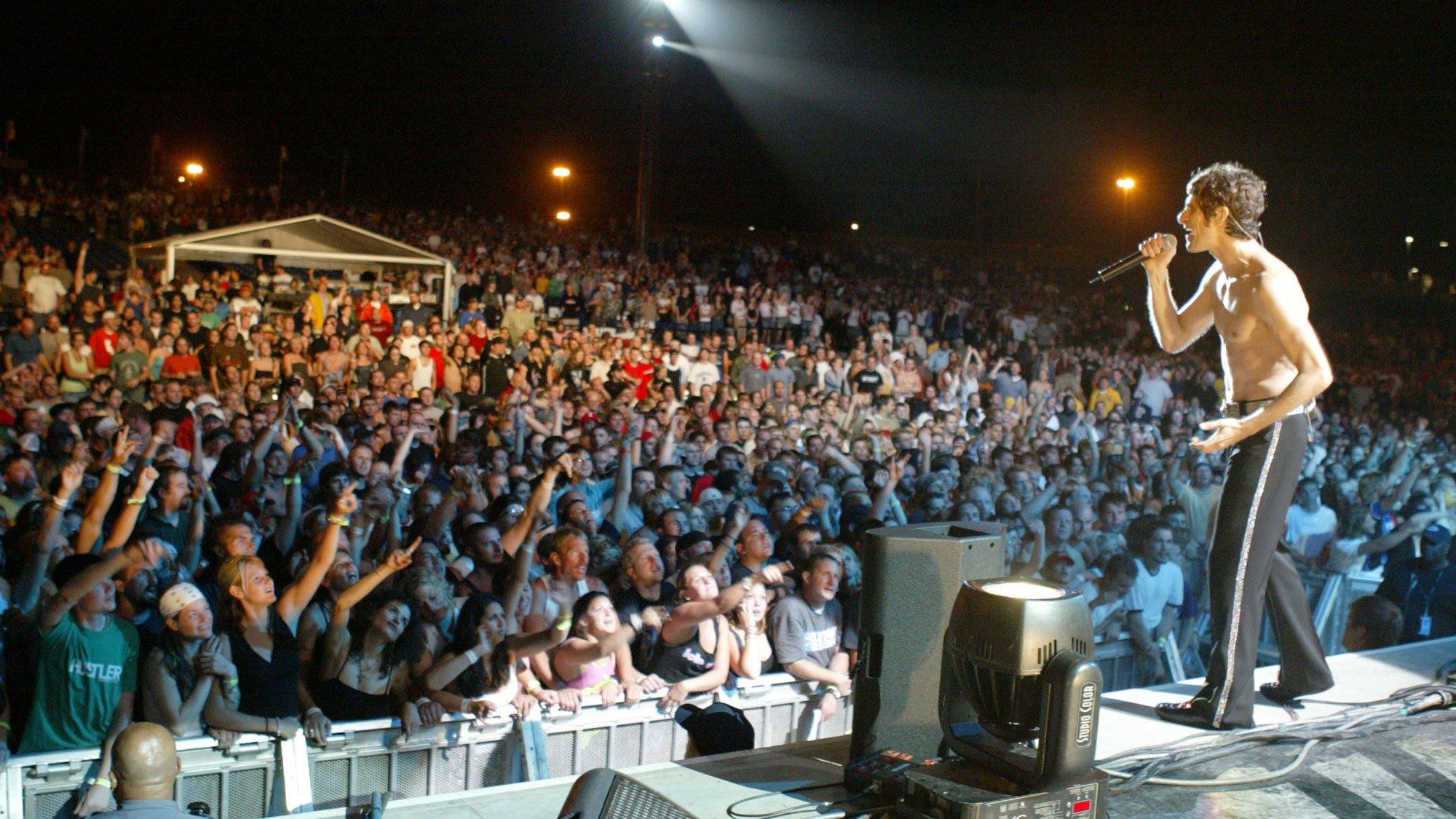
list
'Lolla: The Story of Lollapalooza' Recounts How An Alt Rock Fest Laid The Blueprint For Bonnaroo & More
A new three-part documentary on Paramount+ traces the origin of Lollapalooza from its early days as a traveling alt-rock showcase initially conceived as a farewell tour for Jane's Addiction, to the three-day Chicago-based festival that exists today.
Few music festivals have had the cultural impact of Lollapalooza.
Conceived in 1991 as a farewell tour for Jane's Addiction by lead singer Perry Farrell, the festival quickly became a traveling showcase for alt-rock and counterculture. Its eclectic lineups, which also included punk, metal, and hip-hop acts, helped define a generation's musical tastes.
A new, three-episode documentary, "Lolla: The Story of Lollapalooza," takes an in-depth look at the festival's journey over three decades. From its early days of bringing together alt acts including Nine Inch Nails, Living Colour, Pearl Jam, and the Beastie Boys, Lollapalooza has evolved into what it is today: a three-day festival based in Chicago's Grant Park since 2005. The festival remains an enduring celebration of alternative music.
"Lolla" explores how Lollapalooza defied expectations by both embracing and helping shape the emerging youth culture of the '90s — a rebellious, introspective shift from the flashy excess of the '80s. The docuseries highlights the festival's influence through a trove of archival footage and exclusive interviews with Lollapalooza co-founders, show promoters, bookers, MTV hosts. Of course, "Lolla" features a who's who of '90s-era rockers — including Farrell himself, Flea from Red Hot Chili Peppers, Tom Morello of Rage Against The Machine, Trent Reznor from Nine Inch Nails, Donita Sparks from L7, Ice-T.
To watch "Lolla" is to open a time capsule for alternative culture, one where the stage becomes a symbol of generational change. Read on for five takeaways from the documentary, which is now streaming on Paramount+.
The Reading Festival Served As Inspiration
For their farewell tour, Jane's Addiction decided to emulate the UK Reading Festival's approach to curating live music and alternative acts in a multi-day, open-air forum (where bands like the Buzzcocks and Pixies played to crowds of 40,000).
Jane's Addiction had been scheduled to play the 1990 Reading Festival, but Farrell partied too much the night before after a club gig and lost his voice, and the band had to cancel. Drummer Stephen Perkins and future Lollapalooza co-founder Marc Geiger decided to check out the event anyway, which planted the seed for the future tour.
"Reading was a cornucopia of artists, and scenes, and curation, and it was such a vibe," recalled Geiger in an interview scene from the doc. "I remember saying, 'Perry, we have to do it.'"
Farrell was game after missing his chance to see Reading first-hand. So Lollapalooza co-founders Geiger, Don Muller and Ted Gardner, who was also Jane's Addiction band manager, got to work emulating the Reading model. In addition to live music, Farrell wanted something "completely subversive" with booths to engage festival goers with everything from henna tattoos and art galleries, to nonprofit and political organizations like Greenpeace, PETA, the Surfrider Foundation, and even voter registration for the Rock The Vote campaign. The result was art and activism combined with commerce.
Lolla Was Born From The Death Of Jane's Addiction
Although Jane's Addiction had a big buzz with their third album, Ritual de lo Habitual, the band was on the edge of dissolution. "We really couldn't stand each other," admitted Farrell. Ready for his next act, Farrell saw the opportunity to end on a high note with Jane's Addiction. "The best work we did, we left on the stage at Lolla," he said in the doc.
In the early '90s, alternative acts were not selling out massive venues. Organizers were on edge, hoping fans would buy tickets and show up to not one, but 28 U.S. tour dates featuring the seven-act lineup for the first-ever Lollapalooza.
What nobody expected was the watershed success. The first show saw fans sweat it out to see their favorite acts in Phoenix, on a day with temperatures well over 100 degrees. Nine Inch Nails' equipment melted in the heat, leading the band to destroy their failing gear before walking off the stage.
Despite initial hiccups, the tour wasn't hindered. Lollapalooza's first year sold out in a majority of venues holding 15-18,000 people, driven largely by word-of-mouth and favorable coverage by MTV.
"I think everybody knew and ultimately felt, 'wow, I'm sort of lucky to be here — I'm part of something,'" recalled Geiger in the doc. "It was bigger than anything these artists or fans had seen at that time."
Lollapalooza '92 further mixed genres on the main stage — like gangsta rap (Ice Cube), grunge (Pearl Jam) and shoegaze (Lush) — while greatly expanding the line-up on a side stage upon which Farrell and Perkins introduced their new band Porno For Pyros, alongside many other acts. Lollapalooza's model was born.
Early Years Embraced Racial Inclusivity, But Lagged Gender-Wise
Right from the start, Lollapalooza organizers mixed up the bill beyond white artists that traditionally headlined rock concerts long before and after Jimi Hendrix performed at Woodstock and Monterey Pop. Part of why Lollapalooza thrived is the inclusion of bands like Ice-T's Body Count, Fishbone, and Living Colour — favorite headliners during the early tours.
Rage Against The Machine guitarist Tom Morello credited Living Colour with helping build "the alternative arc" and opening doors for Rage. "Without Living Colour, Rage Against The Machine doesn't get a record deal. Ever," Morello said.
A big moment came near the end of the '91 tour when Ice-T and Farrell squared off to cover Sly and the Family Stone's "Don't Call Me ******, Whitey" in which they tersely trade verses, then end up tangoing across the stage. It was a provocative performance that grabbed headlines and the audience's attention months after the high profile police beating of Rodney King in Los Angeles. In '92, Soundgarden showed solidarity with Body Count by performing their controversial track "Cop Killer" with their guitarist Ernie C onstage in Miami.
While Lolla embraced racial diversity, the early line-ups were male-dominated. Lone female act Siouxsie and the Banshees were a favorite in '91 and later Lollapalooza main stage artists, like Sonic Youth, Babes In Toyland, Lush, and the Breeders — which had more if not all female members — were outnumbered by their male counterparts.
Read more: 6 Female-Fronted Acts Reviving Rock: Wet Leg, Larkin Poe, Gretel Hänlyn & More
Donita Sparks noted that L7 got booked in '94 only after they fired off a bluntly worded fax to the organizers. "We got the offer," Sparks said, "but we had to push the issue. And we had to fight for it. 'Cause that's how much we wanted to be on Lollapalooza, and more importantly, that's how much we felt we deserved to be on Lollapalooza.
Female artists would eventually receive their Lolla dues, with Billie Eilish, Lorde, HAIM, Miley Cyrus and Karol G performing as festival headliners, and artists like Lady Gaga starting out as side stage artists before exploding in popularity and returning to headline the fest a few short years later.
It Became A Victim Of Its Own Success
Lollapalooza from years '91 to '93 were the purest in terms of alt-rock acts, but as the event drew a wider range of talent and demand, it began to suffer a bit of an identity crisis. After all, it's hard to be a beacon for the underground scene once that culture is above ground.
By Lolla '94, attendance set records and alt-rock had hit the mainstream while grunge peaked and critics bemoaned its growing conventional status. Former second stage booker John Rubeli revealed that Nirvana turned down a $6 million offer to headline the '94 tour because of frontman Kurt Cobain's fear of selling out. Cobain's suicide a few short weeks later changed the scene.
In '95, the festival returned with more indie bands on the mainstage, but some were eclipsed by bigger artists like Coolio, who drew a bigger crowd to the parking lot side stage. Increased popularity drove commercial sponsorship, and the event became more expensive. Ticket sales dropped. Then in '96, Farrell quit his involvement with the festival for a year in protest over the booking of Metallica, whose aggressive music and audience he felt were out of step with his vision.
"I felt disrespected," Farrell said. "I'm not putting this thing together to make the most money. I'm putting this thing together to make the most joy."
Upon his return in 1997, Farrell's inclusion of electronic acts like the Orbital and the Prodigy were, to some ears, ahead of the curve. The festival then went on a six-year hiatus.
Lollapalooza returned on shaky legs for its 2003 tour, which included Audioslave, Incubus, the Donnas, and the reunion of Jane's Addiction. But it was truly reborn in 2005 as a three-day event in Chicago through concert promoters C3 Presents (who co-executive produced the "Lolla" doc). Admittedly, some of the 21st century headliners like Lady Gaga, Miley Cyrus, Journey, and Paul McCartney would never have fit the '90s festival bill.
Times have changed and, today, the festival has embraced its conventional success while retaining its original genre-spanning reach with the Killers, Melanie Martinez, Skrillex, and Tyler, the Creator included on this summer's lineup.
Lolla Was A Model For Coachella, Bonnaroo, And Beyond
Prior to the arrival of Lollapalooza, rock festivals were usually single weekend events that took place in a fixed location, like Woodstock in '69, Steve Wozniak's US Festival in '82 and '83, and European festivals like Reading. "I just think it's the first American, truly eclectic concert series since Woodstock," said Ice-T. "And even Woodstock wasn't as eclectic because Woodstock was pretty much all rock."
Lollapalooza's successful tour format inspired other popular tours and live events, especially in the mid-'90s. During the festival's break during the late '90s and early 00's, niche festivals like Ozzfest, Vans Warped Tour, and Lilith Fair stole the show. These festivals not only continued Lollapalooza's legacy by bringing diverse genres to cities across the country, but transformed the live music scene into a cultural phenomenon.
While epic, genre-spanning weekend festivals like Coachella and Bonnaroo have been raging since the early aughts, Lollapalooza first proved that a seemingly radical idea could grow and thrive. Incorporating a mix of rock, hip-hop, electronic, and alternative acts, inclusivity and mobility became a festival blueprint. Today, Lollapalooza is tapping into international audiences and local music scenes with versions of the festival in Argentina, Berlin, Stockholm, Paris, and even Mumbai.
Lollapalooza's success proves that the media and music industry often don't realize the size and passion of certain scenes and subcultures until they're brought together in the right setting. By uniting diverse musical acts and their fans, Lollapalooza highlights eclectic talent but also shows just how much people crave that representation and diversity.
Music Festivals 2024 Guide: Lineups & Dates For Lollapalooza, Coachella, Bonnaroo & Much More
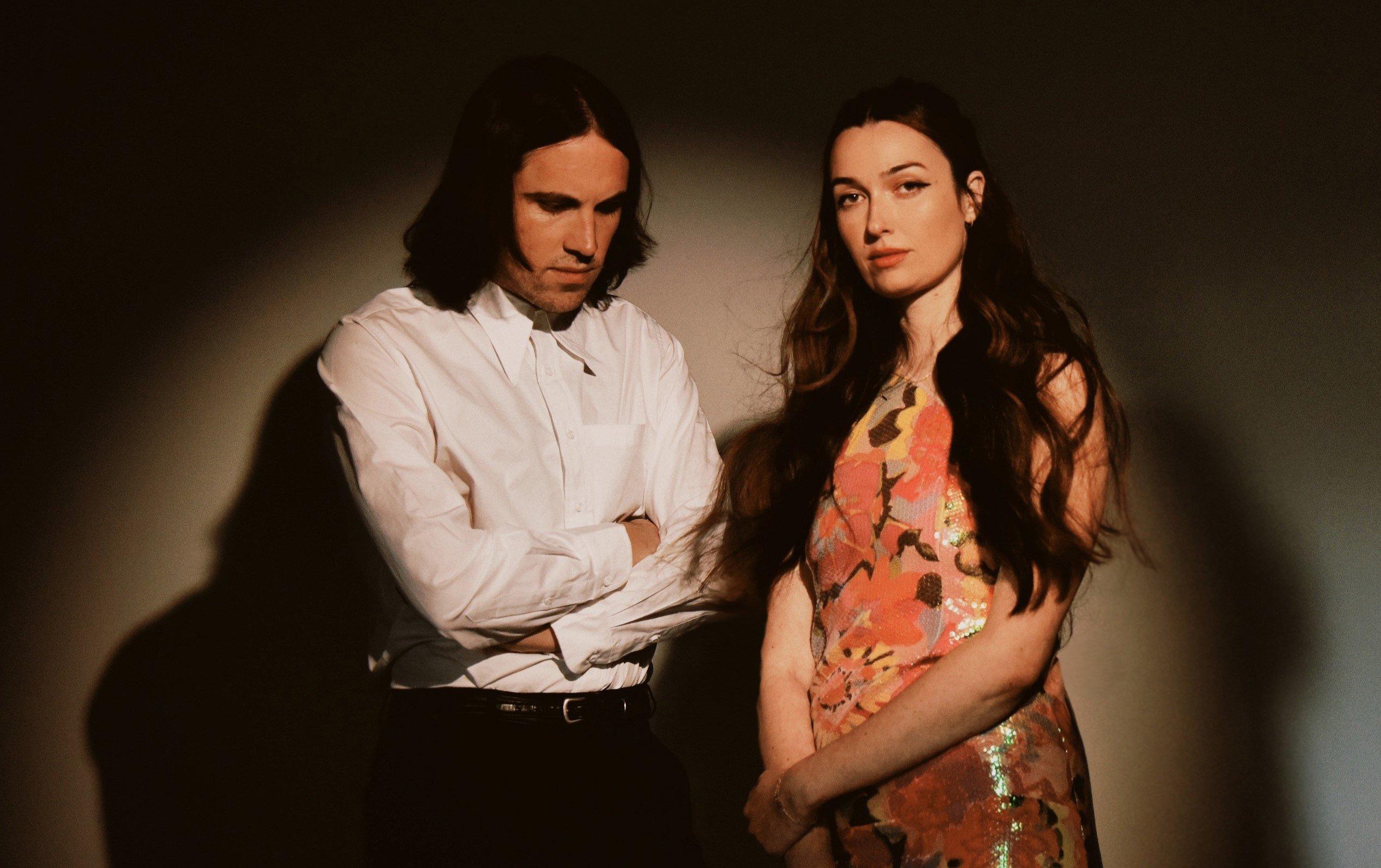
Photo: Shervin Lainez
interview
Cults' Evolution: Madeline Follin & Brian Oblivion Discuss Their Upcoming Album 'To The Ghosts'
Out July 26, Cults' new album reflects their 15-year journey as artists. Ahead of their Lollapalooza performance and U.S. tour, the duo discuss how they've pushed their sound forward.
Over the past 15 years, Cults have captivated audiences with their atmospheric, layered compositions that pack a pop-friendly punch. Now, on the brink of releasing their fifth album, To The Ghosts, on July 26, Madeline Follin and Brian Oblivion reflect on their journey and new creative freedom.
While their previous albums required the duo to stick to deadlines precariously organized between tours, the pandemic provided new circumstances. Freed of distractions and obligations, Follin and Oblivion traveled to Los Angeles in 2022 to join up with their longtime producer Shane Stoneback (Vampire Weekend, Sleigh Bells) to craft an album that looks back on their past while pushing their sound ahead.
"We don't have the sales pitch for the album down yet, but there's no other band that sounds like us," says Oblivion. "We're digging into our thing, and if you're into anything we've done before, you'll love this one."
Adds Follin, "We're like no other."
The album title is addressed to the ghosts of both Oblivion and Follin's past selves. As Oblivion explains, their four prior albums were time capsules that reflected the period in which each album was written and recorded. This release is something different.
To The Ghosts is a personal landmark for Follin, particularly. In 2020, upon the release of Cults' fourth album Host, she admitted that she'd been too shy to bring her own songwriting and demos to the table for the band's first three albums. It was Stoneback's encouragement that altered the creative process for the duo, resulting in their most collaborative album to date, and significantly more reliance upon live instrumentals in the studio.
"We spent a month in an AirBnB then a week in the studio with Shane," explains Follin.
"It was a mad dash to replace all the midi instruments with real ones, so we were running around playing vibraphones, organs, and guitars and all these things we'd recorded in demos and laying it all back down in one week."
It may have been a mad rush at the end, but over the years the duo have refined their formula for making albums. They're no longer the giddy art students and lovers making DIY music with no plans for world domination.
In 2010, Follin and Oblivion founded Cults and released their debut EP "Cults 7", followed by their debut self-titled album in 2011, which was similarly lauded. By the time their sophomore album "Static" arrived in 2013, the pair had freshly broken up and the themes of being creatively and emotionally stagnated resonated in dramatic, spacious orchestral compositions. They followed up with "Offering" in 2017, which was the first of the duo's albums to lean into optimism and a sense of embracing a more pop-friendly path.
That optimistic pop thread is picked up once more in "Crybaby", the first of 10 tracks that kicks off the new album. It launches with a lush, reverb-rich guitar hook and shuddering church bells, then shifts into a calypso beat and Follin's dreamy ode to escaping the modern malaise ("dry your eyes / turn off the screen"). Like the other catchy, bittersweet synth-pop numbers on To The Ghosts, "Crybaby" wraps up in close to three minutes.
The lengthy outliers are "You're In Love With Yourself" and the closing track "Hung The Moon," which runs over five minutes. Ending an album with an epic power ballad is their signature style and "Hung The Moon" bathes in drama, love, loss and redemption. "In a storytelling way, that's the only ending that makes sense to us, a melancholy resolution," Oblivion says.
To The Ghosts captures everything fans adore about Cults and they'll have ample opportunity to catch them performing live this year. The duo are set to return to Lollapalooza opening for Vampire Weekend on Aug. 4, followed by their own headlining U.S. tour the same month.
Ahead of their intensive touring schedule, the duo joined GRAMMY.com on a group video chat from their respective homes in New York’s East Village one evening, to discuss their upcoming release.
This interview has been edited for brevity and clarity.
You began working on this album during the pandemic. Tell me where you wrote and recorded material, and whether you did that together or separately?
Madeline Follin: We were writing and recording in Brian's spare room. Can you see him?
Brian Oblivion: This tiny room! [directs the camera around a room not much bigger than 7 x 10 feet].
Follin: I sat on that couch right there, and we spent a lot of time in that little room [laughs]. For the most part we were together for the entire thing.
**Madeline, you revealed that before making your fourth album Host, you were too shy to show your own music to Brian and producer Shane Stoneback. What broke that barrier down for you to fully participate in the creative process?**
It was really hard to get it out of me. I had really strong imposter syndrome. Even though Brian was just starting out, he had taken a few recording classes in college, so he knew a lot more of the recording lingo and ways of communicating technically. I didn't know, so I felt so nervous to even communicate what I wanted. Shane helped with that a lot in terms of translating what I wanted into the language of studio speak. Shane is unlike any other producer we've worked with. He heard me out.
Tell me about working with Shane Stoneback in terms of what you came into the conversation with, and what he contributed to shaping this album.
Follin: We thought that we were not going to work with Shane again because he'd largely gotten out of the business. During [the] pandemic he switched careers and began working in the movie business. So, we started working with a few other people, we were feeling it out, and it just wasn't working. We reached out to [Shane], and he randomly happened to have 30 days off and said if we can finish it in 30 days, we can do it. We said, "we're coming out tomorrow."
What were the creative decisions you made in the earliest stages, and how much did you change your mind or allow outside ideas in as you were working on this album?
Oblivion: It took us a really long time. We definitely wrote over 100 songs. I put it all on an iTunes playlist and it was over 6 hours of music. This time we got a lot of confidence from some of our older songs being popular with young people. We thought, maybe the time has come around where we can do exactly what we do, and that's kinda 'new' again. Once we went through all the permutations and landed on "Crybaby," which was the first song on the record, we just thought "this just feels like us, so let's lean into what makes us unique." The messing around period was just trying out new tricks and trying to expand our possibilities.
John Congleton has a real knack for guitar sounds and finding a rawness to live instruments. How did he come to mix this album?
Oblivion: I've been a fan of John's going back to Xiu Xiu and my high school days. He's a master of distortion, him and Dave Fridmann, that's their thing. They can make things really fuzzy and interesting, but also fit it all in the speakers in a way that's like a weird magic trick. We have kind of a vintage sound, and he gets that but he's also smart at highlighting things that are new. He mixed our last record too and from the first conversation, in which he said he thinks like a musician and wants to do something strange, we knew we wanted him.
Follin: We'd mixed with other people before but when we got a mix back from John, he was bringing out parts of the song that we hadn't even recalled leaving in there. He makes our songs sound new to us again. We have a lot of trust and respect in him, and we were trying for so long to get our schedules lined up.
Oblivion: We work on our music for so long that by the time it's ready for the mix, we really want to hear something new. It's refreshing for us that John hears something new in us.
Tell me about "Crybaby," the first single. What were you going for in terms of the music, the mood and the message?
Follin: We'd been working on that song as part of the 100 songs that didn't make it. Brian started working on that song and I had never heard anything like that come out of his computer before, and I was shocked. It's funny because people say it's so "Cults sounding", but I thought it was unlike anything we'd done before. It's got a '60s vibe, an island vibe, to me and I thought we needed to zone in on it.
Oblivion: That was at the point where we decided "let's see if we can still make Cults songs that hark back to the earliest record." I love the lyrics, they're simple and there's no hidden meaning, which is great. A lot of the music that we love and that inspired the start of our band, is really obvious but also really weird in terms of lyrics. "Crybaby" is a fun, whacky diss track.
Let's talk about what inspires you musically.
Oblivion: What gets me excited is spending a lot of time sharpening my Spotify algorithm, so every Monday I get a collection of weirdo emotional love songs about heartbreak, these obscure, catchy B-sides, and whenever I find a song like that, I'm so inspired. Something that has kitsch, gravitas, and a bit of humour, that John waters, David Lynch combination lights me up.
Follin: Right now, I'm really into a lot of Fontaines D.C. I felt a 'Cults' vibe from them even though they probably have no idea who we are. It's been a while since I've put on a song, and then I want to put it on again right away.
"Left My Keys" is an anthem for growing up. Tell me about your experience growing up in this band.
Oblivion: What makes this record different is that historically, we'd do all the music together over a span of two years, then Maddy would squirrel away to take a month or two to write all the lyrics, and that made the records very reflective of that moment, that time. For this record, because we had a protracted work schedule with nothing else to do, we took the time to slow down and look back. "Left My Keys'' is about being a teenager, and "Crybaby" is about things that happened a long time ago. Growing up is being comfortable enough to address your own past and realizing everything turned out okay so far. It's the first album where we're looking backwards and processing stuff from the last 15 years and before.
This album feels brighter than 'Host.' What happened between 'Host' and 'To the Ghosts' that explains the transition?
Oblivion: There's a lot of stuff we got out of our system. Host and Offering were both dark records, to me. It's wild to see that young people have picked up on "Gilded Lily" and that was such a crazy, cathartic song for us, so now it is crazy and cathartic for them. Most of my favorite bands are dark, sad bands, but that's not the totality of who we are. Being able to explore both sides of who we are was refreshing for us.
Follin: Personally, we were both feeling a lot better in our lives. We worked through a lot of anxiety, and because of the pandemic there was less partying, clubs, and bars. We had time to get healthier.
Oblivion: In a lot of ways our band is defined by our limitations. We have made music for 15 years, just the two of us with the same producer. But every time we make something new and interesting and all the things we think of as roadblocks help to provide a framework for what we do.
You released 'Host B-Sides & Remixes' in 2022, two years after 'Host.' Are there outtakes, or planned remixes, that are planned for this album too?
Follin: Definitely. 100 percent, we will be having something, but I'm not saying.
Oblivion: It's been really fun with the last few albums to put out songs that showed what would have happened if we went in a different direction. Sharing that part of the process with listeners has been fun.
You have a huge schedule of touring. Tell me about the plans and how you mentally and physically endure all the travel and performances. Does it get easier the more you do it?
Follin: No. Every single night, even if we're in the middle of nowhere, whether there's 15 people or 1000, I almost have a heart attack before walking on stage each night. You're crammed in a box with 7 people every night, there's a lot of emotions…
Oblivion: …and something is always breaking at soundcheck, it's like arghhhh! It's really hard, but when we put out Host and we didn't get to tour for two years, we missed that connection. The feeling of sharing your music with people allows us to move past it and get into something new. It's a big part of our personal growth and experience. We love touring.
Follin: In normal daily life, we hang out together. We hang out on weekends. It's not a forced thing. It feels so good to meet fans every single night, too, and hearing stories of how you affected somebody's life.
Most of the tracks on this album fall at around the three minute mark, and many end quite abruptly without fading out or dwindling down. Was that a deliberate strategy, and then why did "Hung The Moon" require that extended time as the finale?
Oblivion: It's verse-chorus-verse-chorus-bridge-chorus and you're done in three minutes!
Follin: Brian is very concerned about time, and I don't think it matters. I like shorter, he likes longer. We're compromising.
Oblivion: "Hung The Moon" is the big epic ballad that ends the record. We have had one on every record, it always ends with a big power ballad. In a storytelling way, that's the only ending that makes sense to us, a melancholy resolution. I love that song because it starts off as a sweet love song then it gets tense and spooky towards the end, but the lyrics stay really loving. It's that transition between the rush of an initial relationship and then the long game, where it's sweet and delicate, but it's also real life, so you're afraid that you'll lose things and you're trying to hold on to that original thing. So, the album ends on a bittersweet note.
Lollapalooza News

Cults' Evolution: Madeline Follin & Brian Oblivion Discuss Their Upcoming Album 'To The Ghosts'

'Lolla: The Story of Lollapalooza' Recounts How An Alt Rock Fest Laid The Blueprint For Bonnaroo & More
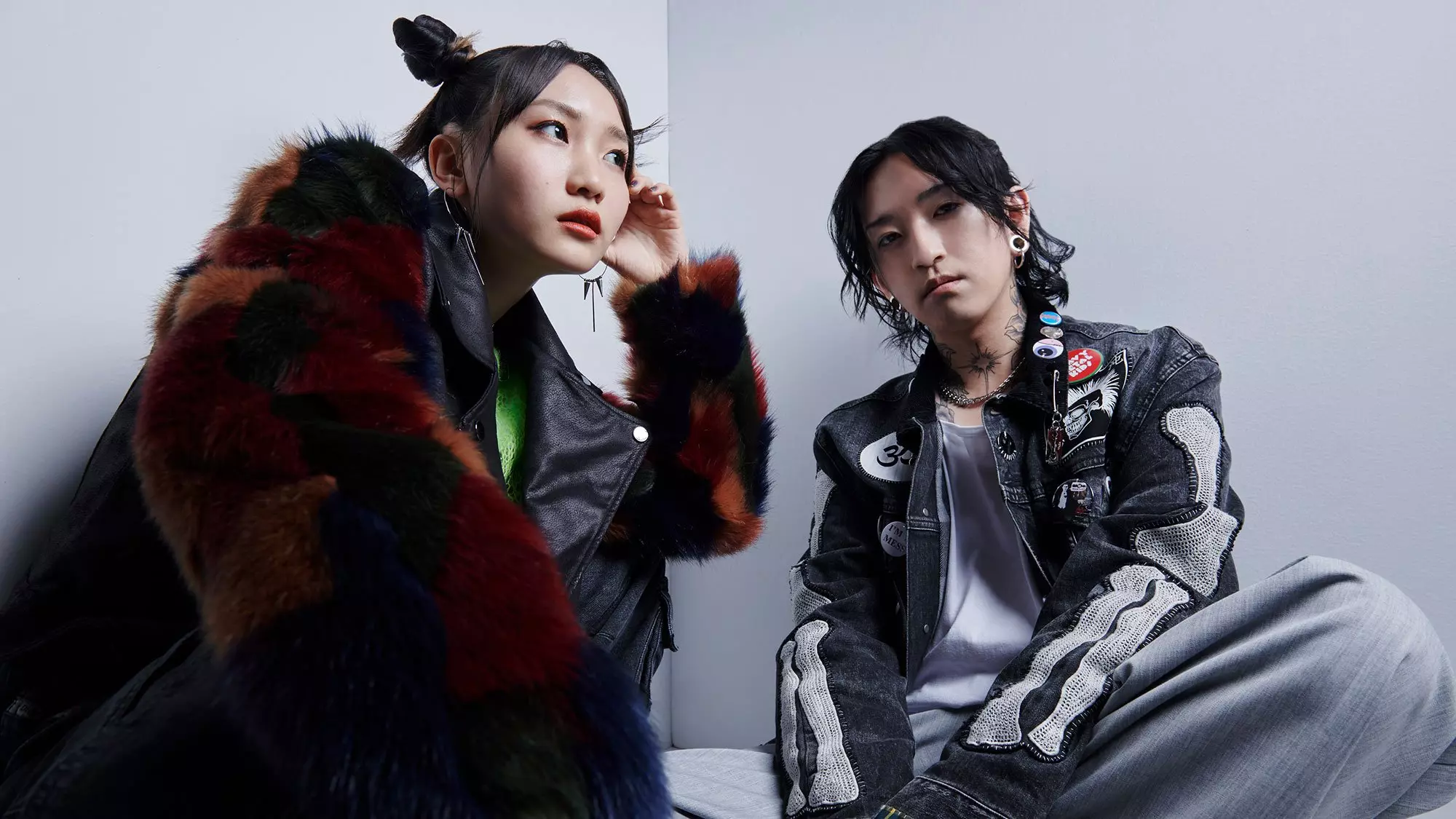
From Tokyo To Coachella: YOASOBI's Journey To Validate J-Pop And Vocaloid As Art Forms

Lollapalooza Announces Lolla2020 Virtual Fest Celebration In Place Of Cancelled In-Person Event
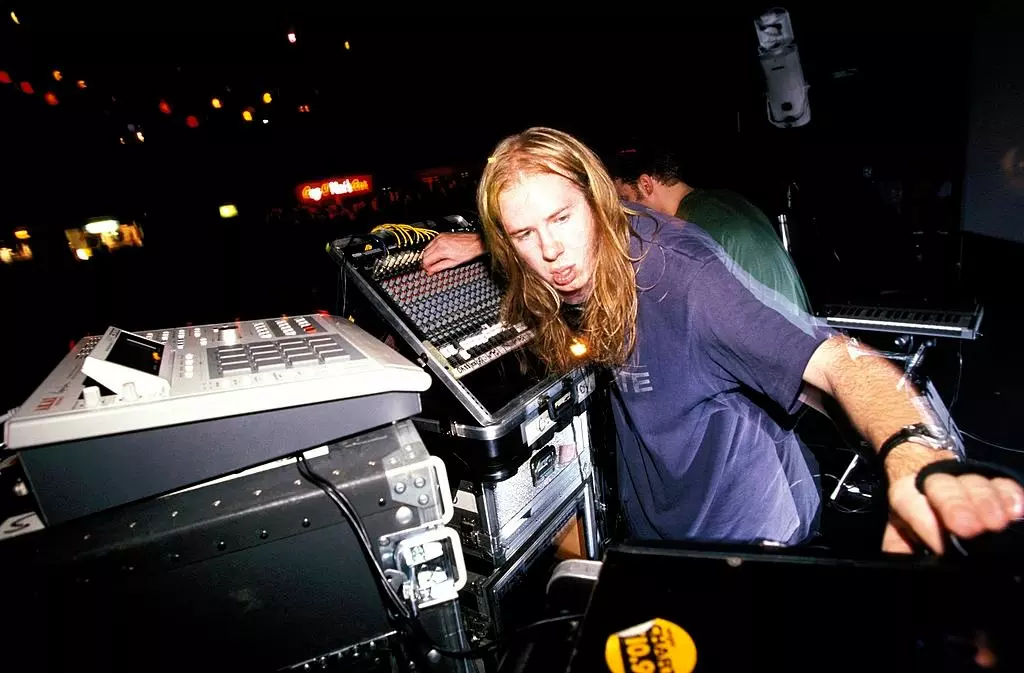
How 1995 Became The Year Dance Music Albums Came Of Age

Photo: Dana Trippe
interview
Finding 'Comfort In Chaos': John Summit On The Journey To His Debut Album
"I always wanted to do an album," the DJ/producer says of 'Comfort in Chaos.' Although Summit has graced many major stages, creating his full-length debut took "over 10 years of producing and eight years of releasing music to get confident enough."
"I'm a little hungover, but I'm hanging in there," John Summit admits with a chuckle. The DJ/producer had stayed out late the night before (as DJs typically do) but for once, it wasn’t for work. Instead, he and his friends went bar- and club-hopping — "normal people stuff," Summit calls it. When asked how often he gets to do that these days, he laughs again. "Literally never. I felt like it was the first time in years."
Given the past few years, it’s understandable. Summit was still early in his career when he released his breakout hit, 2020’s "Deep End," a couple months into global lockdown. He maintained that momentum with a long string of releases including "Thin Line" with Guz, "Sun Came Up" with Sofi Tukker and "Human," the latter producing his first U.S. Dance Radio No. 1.
When live events powered back up, Summit quickly graduated to playing major venues and main stages. In the last two years, he’s DJed everywhere from Movement Detroit to Manchester, Turin to Tulum, and NYC to nearly every Ibiza superclub; in between, he launched his Experts Only record label. This year, Summit closed out EDC Las Vegas and Coachella; in June, he headlined a show at Madison Square Garden. Being a dance music superstar is a marathonic job, but a glance at his off-the-cuff social media posts suggests he’s more than up for the challenge.
Despite his hectic schedule, Summit somehow carved out time to write his debut album, Comfort in Chaos. In a way, it showcases his past, present and possible future. Recent single "EAT THE BASS" delivers the booming energy of the club tracks upon which he made his name; others, such as Billboard Top 10 hits "Where You Are" and "Shiver" with Hayla, are examples of his current evolution into lyric-focused songs, equally rich in melody and emotion. There are more surprises, still, as Summit explores sounds beyond his house and techno playground. "[This is] exactly the kind of music I've always wanted to make," he says, "but I never had an outlet or a reason to because they're not dance-floor-focused tracks."
The album’s sonic extremes also represent the duality between John Summit, the artist we see living his best life, one party at a time; and John Schuster (his given name), who’s introspective, who isn’t always confident, and who’s experienced "the lows" of returning from a show to an empty hotel room. "Now I'm comfortable where I am in life and I feel like I can tap into that [emotion]," he says. "It's cool to be able to show that side of me."
Before Comfort in Chaos’ release on July 12 via Darkroom/Experts Only, Summit tells GRAMMY.com how he got to this milestone.
This interview has been edited for clarity.
How long has the idea of a debut album been in your mind?
It's been in my mind since the day I started making music. I really got into songwriting four years ago. I did "Summertime Chi" with Lee Foss, which is an original written vocal, and then I did "What A Life" with Stevie Appleton a year later. That was received really well by my fans and I'm like, Oh, I don't have to just use samples. I can actually write completely original music.
Ever since then, the music has gone crazy. The first single off the album that I made was "Where You Are" with Hayla, which came out over a year ago, and that's when I feel like the ball really started rolling. In November, I took a month off and wrote pretty much the whole album in London and it really all came together then.
An entire month off? That seems rare.
Yeah, it's insane for me. I haven't taken a month off since I started touring, but I knew I had to do that, especially to make music that's not just meant for the dance floor. I produce on the go. I produce on planes and everything, but when you're always playing shows, you always make music just for the shows.
When you can actually take time off, I feel like you can make music that's actually meant for those rainy London days meant for just chilling with friends and stuff like that. So it was cool to make an actual body of work instead of just festival music.
What did that month look like for you in terms of the creative process?
I got this studio house for a month; this crazy house that has a couple of studios in it. My bedroom's at the top and I would take a slide down to my studio literally from the bedroom. I had a session every day for 30 days straight, and I just invited all the singers and producers I worked with. Sub Focus for example, he lived in London and then Hayla, Julie Church, Paige Cavell.
Pretty much everyone I work with is UK-based, so it was kind of a no-brainer to go to London for that. It was a lot of fun because we just make music all day, then drink at night and party. That's when you can share all your ideas with other people, at night when you're having drinks, wanting to call it banter. It was great.
To speak more about the variety of music that you make: You initially broke out with very club-forward tracks like "Deep End." But as you said, you've since honed a more melodic, songwriting-based sound. Was it a conscious evolution or did it just gradually happen over time?
I feel like it was just an evolution as an artist. House music is a very loop-based sound where it's, what, a four-by-four kick drum and an eight-bar loop… I kind of graduated from that to doing full-written songs [like] "Where You Are." But it took a lot of time.
I was always writing songs during that process, but they weren't good. Writing a full song, it's like going from a short film to a movie. I always wanted to do an album, but it really did take me over 10 years of producing and eight years of releasing music to get confident enough to be able to do this.
How do you tap into the emotion of those songs, especially given the image that you portray online?
I guess that's the whole purpose of the album: That I've been portraying this John Summit image my whole career, but in reality I'm John Schuster. The John Summit image is obviously an entertaining party guy that loves to have a good time; in reality, outside of the club, I'm just sitting at home making music, and I want to show the more introspective side of me.
I've been neglecting my emotions the past few years, especially after quitting the accounting job five years ago. Then I was just in this full party mindset, but now I'm comfortable where I am in life and I feel like I can tap into that. So it's cool to be able to show that side of me.
Who is that more introspective John Schuster?
Someone that, I guess, shows that I'm not really a 100 percent confident all the time. That I've experienced very high highs, but very low lows as well. I mean, John Summit has the biggest highs on stage, but then I go back to my hotel room and I'm by myself and experiencing the lows and being by myself all the time. So I guess showing that kind of emotional side is fun for my music at least.
Absolutely. I imagine it’s difficult going not from zero to a hundred, but a hundred to zero.
Exactly. That's the hard part. Zero to a hundred is the fun part.
If debut albums are like an artist's mission statement, what do you want 'Comfort in Chaos' to say?
I think kind of what I was just touching on, the duality of John Schuster and John Summit. This is the first time I've fully shown my other half. I've been showing it through singles: "Where You Are," "Go Back," "Shiver" and stuff. But to do it in a full album where — especially the intro track where there's really no vocals on it, and it starts experimental and a bit progressive, and then the drop is really just a kick in bass. It's tension-release, which I love in music, but it just shows, not to be too pun intended, the comfort in the chaos that is my life right now.
What brings you comfort in chaos?
That's a good question. Honestly, it's more so me trying to find my comfort in chaos. Because the thing is that if I'm on stage every night, I’ve got to be comfortable up there. The more confident I am, the better show that I do. And so I think I'm finding it now.
It's kind of the whole fake it till you make it. At first I had to get hammered every single night just to get on stage, and now I can get up there without doing that, which is a big stepping stone for me.
So it seems like it's more about the journey than the destination.
Exactly, exactly. It's basically trying to find my comfort in chaos. And I think I've gotten there, so now is the perfect time for the album. I couldn't release that while I'm still not comfortable.
Given how significant Kaskade and deadmau5’s "I Remember" is to your electronic music journey, it must feel very special to have Kaskade on the album.
Yeah, it was kind of a no-brainer. I was able to remix "I Remember" last year, which is huge for me. The track that literally got me into electronic music. Kascade is also from Chicago, and he's the one that introduced me to Hayla, too.
We've been trying to make something work and we just didn't know what direction to go with it. It took a while, but we both love melodic and emotional music and we both love heavy techno, and so we made it work in one song, which is great because the track starts very comforting and it gets very chaotic, so it's very on-brand with the album.
What have you learned from Kaskade, whether directly or from afar?
I've learned patience, and that everything's going to be okay. I'm a very neurotic person; I am very anxious and worry about every little detail, and he's the coolest, calmest guy I've ever met. I think it has to do with just his experience in the scene. Everything I'm experiencing is something he's experienced at some point in his DJ career, and even before Coachella, I was like, "Man, I don't know if I can do this" And he was like, "Bro, you got this. It's easy. Play your music." And I'm like, "Oh s—, you're right." It’s as simple as that. Yeah, he's been a good mentor.
To borrow a word that you've used in another interview, being "unhinged" on social media has played a significant role in building your fan base over the years. How has your relationship with social media changed in terms of the content you share and fan interactions?
I'm still definitely unhinged on social media. That hasn't changed, but it has made me not afraid to show all facets of myself. I've just started showing the more emotional and deeper side of myself, but it is cool that I can say no matter who I am, I have good days and bad days. The fans can connect and resonate with that, which is cool because it was annoying growing up and following artists who are perfect on social media all the time. So I try to be as transparent as possible.
Given the positive response to your collaboration with Subfocus, do you feel more encouraged to get eclectic in your future music?
The Subfocus one was still pretty dance-floor-focused, and I still haven't released anything that's not dance-floor-focused. I mean, obviously in the album there is with the intro, with "Calm Down," with "Undo," with ["Palm of My Hands"] and ["Stay With Me"], so I'm waiting to see how fans like that. But at the end of the day, though, I’m at the point in my career where I don't have to put out things just to please dance floors. I feel like I've kind of made it where now I can experiment more and take risks. Now is when my career is starting to actually get fun.
Latest News & Exclusive Videos

Watch Henry Moodie Share His Epiphone Guitar
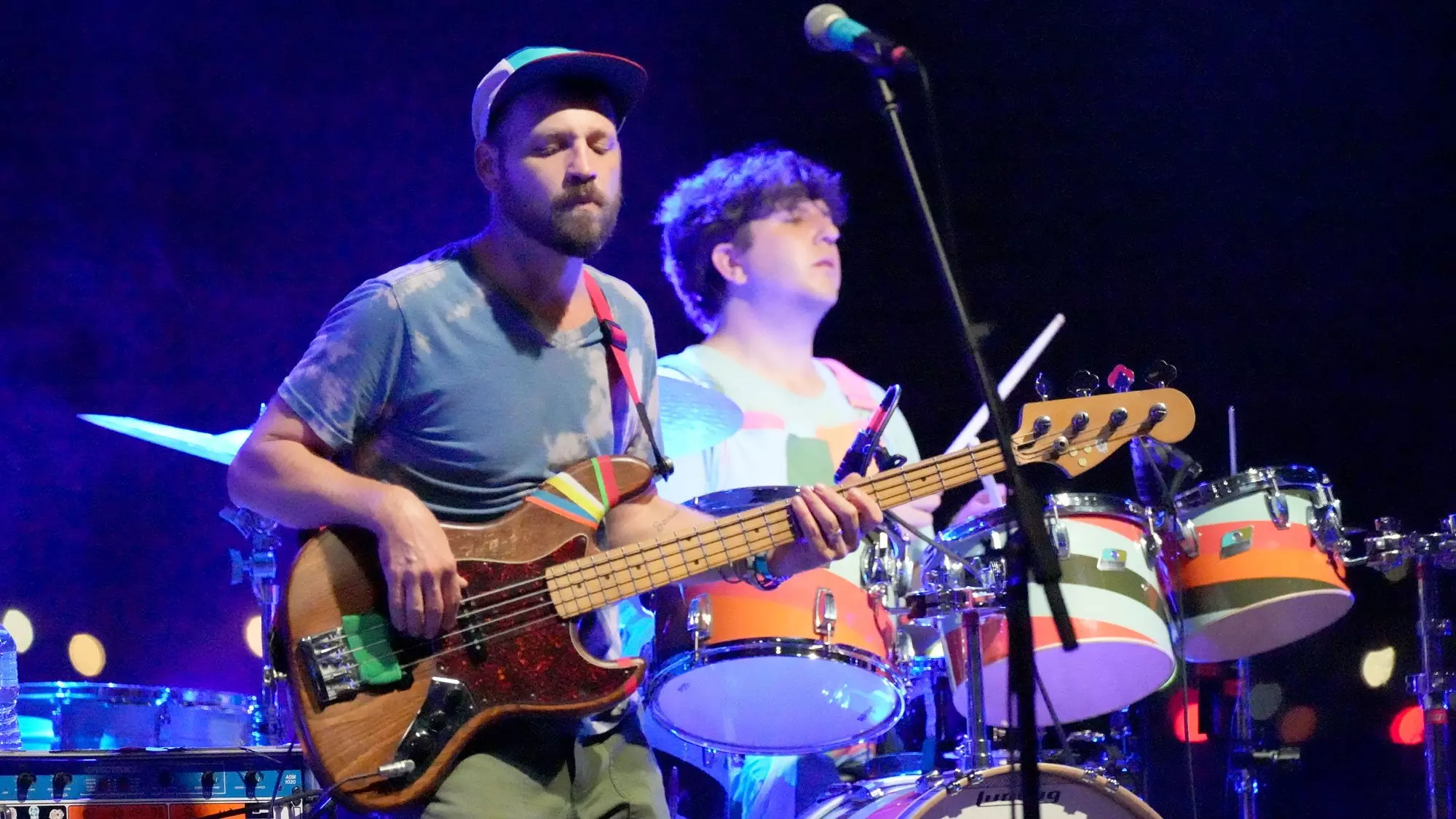
Still Barking After All These Years: Dr. Dog On Low-Key Longevity And Their New Self-Titled Album

Cults' Evolution: Madeline Follin & Brian Oblivion Discuss Their Upcoming Album 'To The Ghosts'
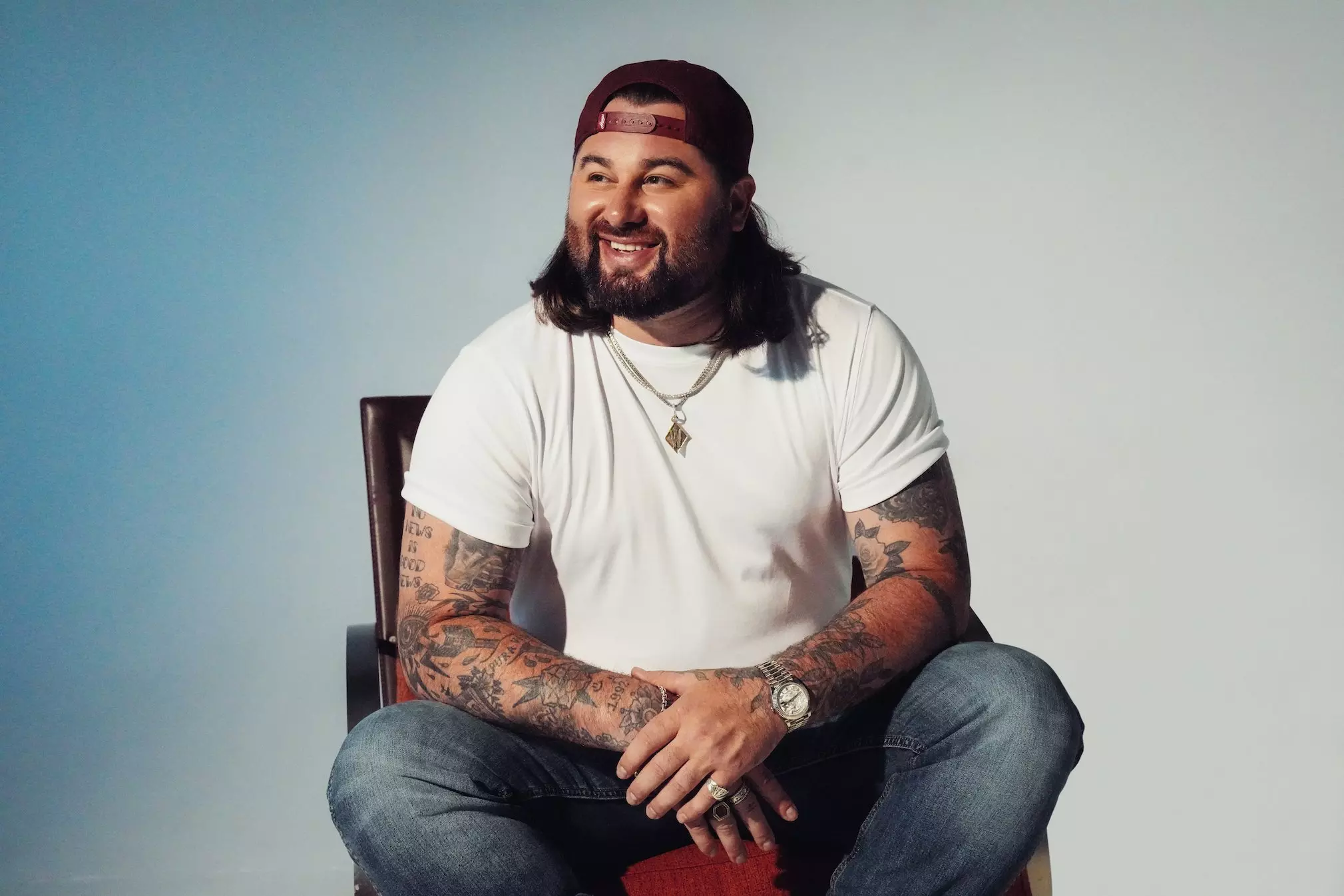
Koe Wetzel On How New Album '9 Lives' Helped Him Tap Into His Feelings
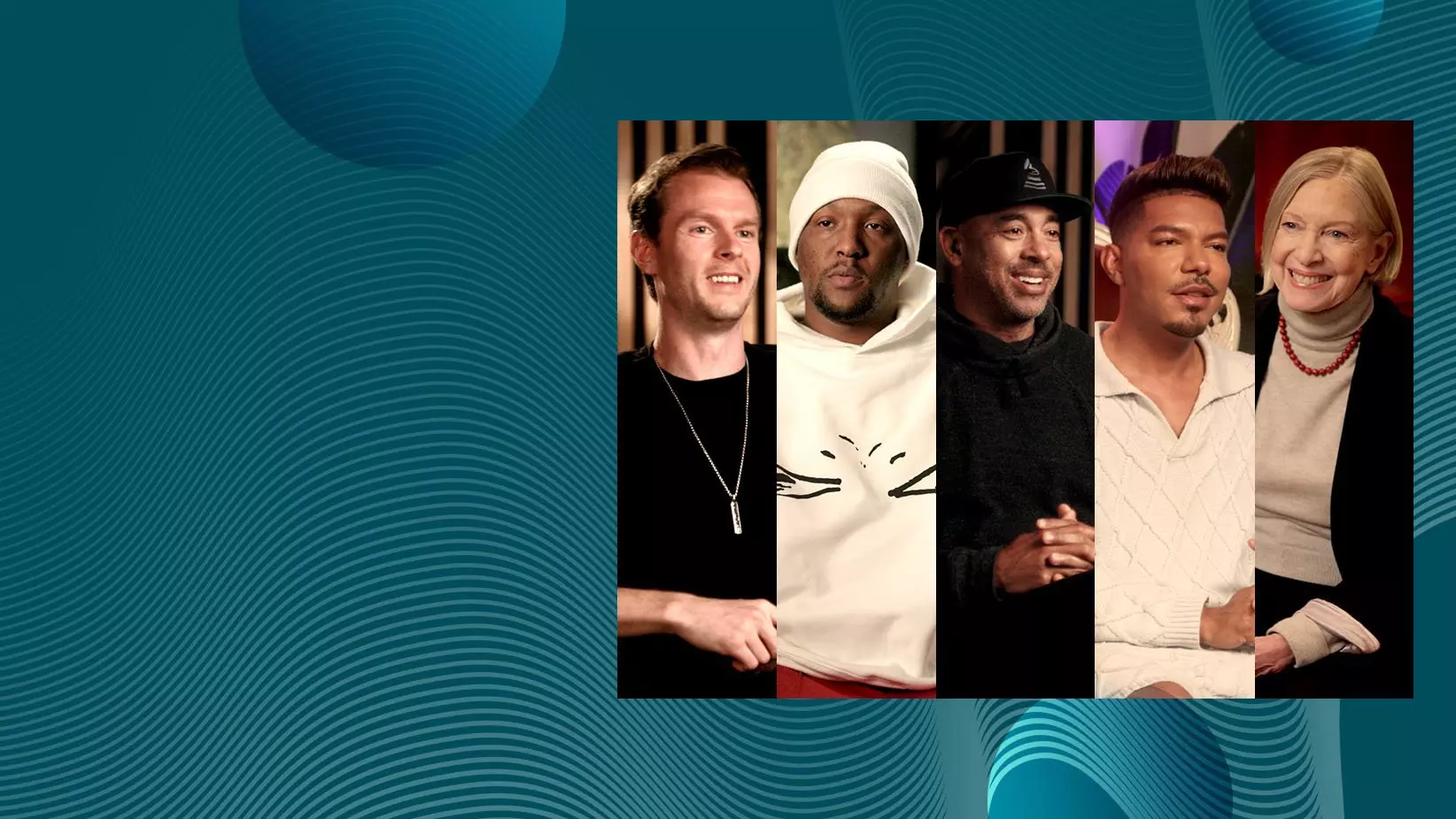
The New GRAMMY GO Music Production Course Is Now Open: Featuring GRAMMY Winners Hit-Boy, CIRKUT, Judith Sherman & More
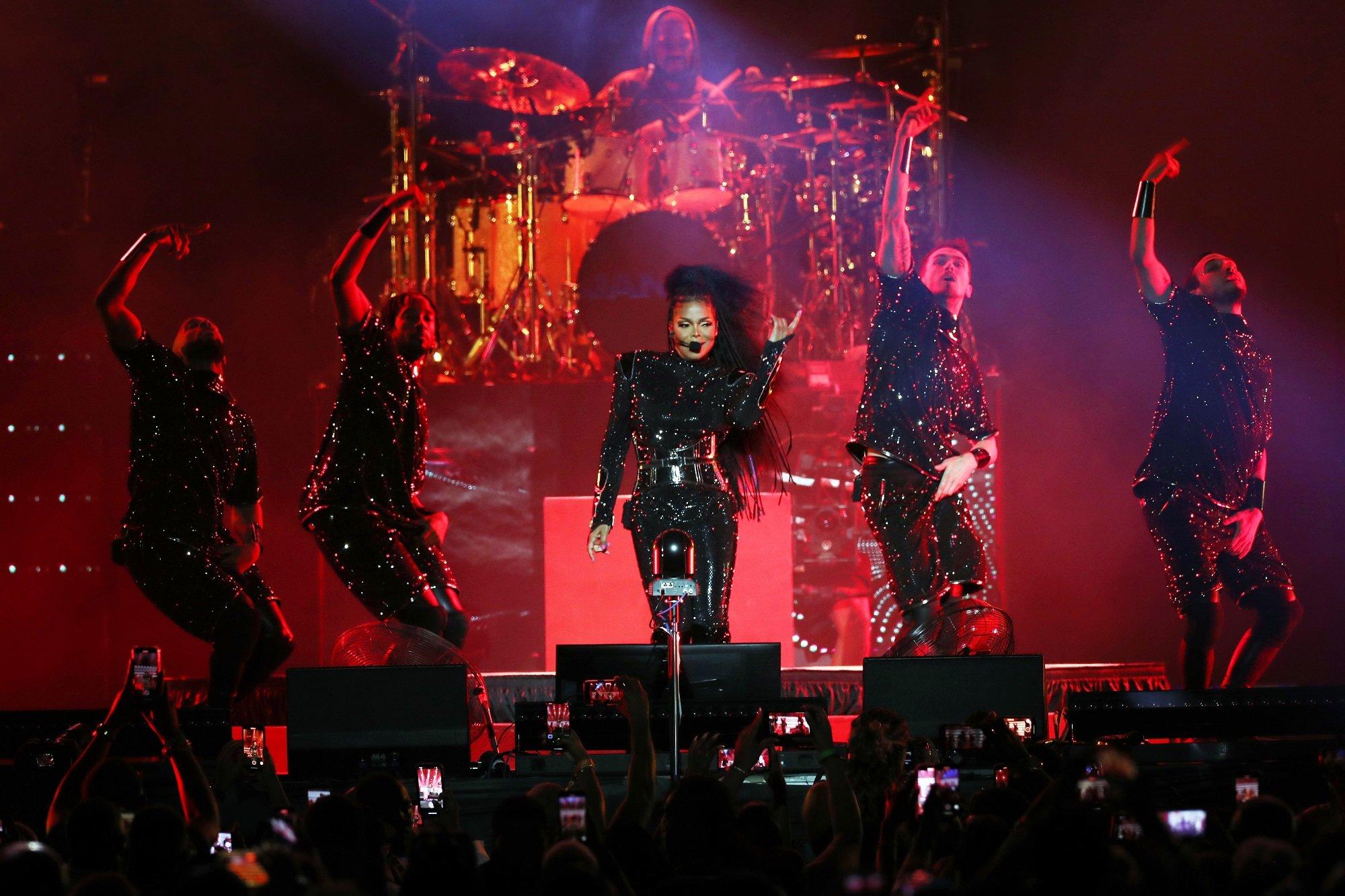
Photo Credit: Bennett Raglin/Getty Images for Essence
interview
Celebrating 30 Years Of Essence Fest: How New Orleans & Multi-Generational, Diasporic Talent Create The "Super Bowl Of Culture"
Ahead of the 30th Essence Festival Of Culture, held July 4-7 in New Orleans, GRAMMY.com spoke with executives and curators of the legendary celebration of Black excellence.
Every July, millions of Black people, specifically Black women, descend upon New Orleans for the Essence Festival of Culture (EFOC). Known for many years as the Essence Festival, the festival is a celebration of Black culture, community, and heritage. Since its inception in 1995 as a one-off event to commemorate the publication’s 25th anniversary, the festival has evolved into a diasporic jubilee, drawing in people of African descent from across the diaspora.
In addition to its global presence, the festival pours millions of dollars into the local New Orleans community, which has served as the festival's home for 30 years (with the exception of 2006, when the festival was held in Houston, because of Hurricane Katrina). In 2020, the festival was canceled because of the COVID-19 pandemic. Despite this, the annual festival continues to be one of the most sought-after and attended festivals in the United States.
This year’s Essence Festival of Culture will be held at the Superdome from July 4-7, replete with legendary and fast-rising talents. On July 5, Birdman & Friends will celebrate the 30th anniversary of Cash Money Records. The following day will feature a special performance by Charlie Wilson, while Usher will commemorate the 20th anniversary of Confessions.
Janet Jackson and Victoria Monét will headline the festival's final night, while Frankie Beverly and Maze close out the festival with the return of All-White Night. Other performers include The Roots featuring Mickey Guyton, Ari Lennox and T-Pain, Busta Rhymes, Raphael Saadiq, D-Nice featuring Shelia E, Big Boi, and many more.
Read more: Music Festivals 2024 Guide: Lineups & Dates For Lollapalooza, Coachella, Bonnaroo & Much More
EFOC has been compared to SXSW, Coachella, Austin City Limits, and other notable festivals, yet it stands out for its empowerment-centered approach. It is not simply a festival, it is a family reunion. The one festival in the United States that does not pander to or take advantage of Black audiences, but truly celebrates them and their achievements. Although music has always been an integral part of the festival’s ethos — Aretha Franklin and B.B. King performed at the first iteration — the festival excels in its multi-generational and interdisciplinary programming. On any given day, attendees can attend sessions on Black entrepreneurship, politics, mental health, and literature, as well as seminars focused on issues impacting the Black community.
There’s a reason why the festival is referred to as the party with a purpose. For decades, it has operated as a celebratory convening place for Black people, Black families, and Black communities. Now, more than ever, spaces like EFOC are needed, as the Black community experiences an onslaught of changes — from Historically Black Colleges and Universities in North Carolina and Tennessee being subject to intense government oversight, to Black women-owned venture capital firms being targeted by conservatives, and Black voting rights becoming at risk during an election year.
Ahead of the festival’s 30th celebration, Michael Barclay, Executive Vice President of Experiential for ESSENCE Ventures and Barkue Tubman Zawolo, Chief of Staff, Talent and Diasporic Engagement for Essence Ventures, spoke to the Recording Academy about the history, legacy, and future of the Essence Festival of Culture.
This interview has been edited for clarity.
Are you part of the generation that grew up with the Essence Festival of Culture? If so, how does it feel to be a part of it?
Barkue Tubman Zawolo: I'm originally from Liberia. And even being in Liberia, prior to my family moving to the U.S. in 1980, Essence was always a thing for my mom and my aunts. When we came here, fast forward to me, as an adult, [after] graduating college, I got into the music industry. I've managed artists that have gone through the Essence stages and pages in different ways.
Essence Fest has always been something that we were familiar with. I have to say, I had not really experienced Essence Fest until 2019 when Essence was actually a client. One of the things that I was doing [at that point] was integrating the Diaspora and African creatives within the festival in fashion and music.
To be in the role that I'm in right now and to be on a team with people who have been a part of Essence for a long time…. Essence seems to be ingrained in all of our fabric. [What] started as a music festival now is the Super Bowl of Culture that is the Essence Festival of Culture. To be on the team that helps bring this to life for our community is a daunting but rewarding task all in the same.
Essence is something that I don't think anybody in our community takes lightly. Even our partners understand the value of it. We certainly understand that we serve the Essence-inverse and, and we are in service to this community. It is a huge honor to be able to be a part of the team that brings this to life and, and, and constantly hear what it means to the community globally too.
One thing that I admired, especially about last year's festival, was GU Kickback — a music event hosted by Girls United, the publication’s Gen Z vertical. I saw a number of local artists from New Orleans, such as 504ICYGRL. ESSENCE just released a series of cover stories celebrating the 30 year relationship between the publication and New Orleans; how do you highlight the city and their history?
Michael Barclay: As somebody who's worked in experiential, creating gatherings and experiences for almost 25 years now, the venue is always important when you're trying to set the box where you are creating for your community, for your audience. New Orleans has been that backdrop for us for almost 30 years now.
New Orleans is the convergence of our mission, our brand, in a city that is perfectly matched for that energy. New Orleans is as much a part of Essence Festival of Culture as Essence Magazine is to Essence Festival.
It is very much a partnership that has created this cultural movement. To be more inclusive, and highlight more of those local relationships and talent is very intentional. It has been something that we have put a lot of energy and effort into over the last couple of years.
This will be my third festival this year. I think Barkue, you started maybe a year or two before me. We're a fairly new crew that is working to help grow and reshape and solidify those relationships. Even with how we handle the management of the festival.
Our VP of Essence Festival, Hakeem Holmes is a hometown boy from New Orleans. He's the pride and joy. They love to see him coming. He's always enlightening us on the things that we need to be focused on for the city and how we make the best partnership and make the best impact on the area.
It was intentional what you saw last year. It's intentional this year. We dedicated our entire festival edition of the magazine as a love letter to New Orleans. It's a symbiotic relationship that is one of the key reasons why this festival is the Super Bowl of Culture.
I would love to hear about the talent aspect of the festival. Last year, Megan Thee Stallion headlined. In previous years, Beyoncé and Prince have served as headliners. What is the formula between balancing local talent, national talent and diasporic talent at the festival?
Zawolo: As we grow the festival, the intentionality becomes even more and more important. And, what we do in understanding where we are as a brand.
We're 30 years into the festival, the brand is 55 years. What's traditionally known as the Essence Woman is now bringing her daughter. It's multi-generational. We also know that the world is as big as your cell phone, so people are now exposed to different types of content and music.
We see the influence of Afrobeats and Caribbean music. We are intentional about making sure that every night really speaks to multiple generations, but it's anchored in a generation. It's like, who's bringing, who to the concert on Friday? Is it the daughter bringing her mama?
It's anchored in that younger demo, but we're going to make sure that they're going to have a collective good time there. Saturday is usually our heaviest night. We have our living legends that show up there; that really cuts across generations. This is anybody can bring anybody, but let me tell you, you're going to be able to teach each other, connect with each other with the different groupings of talent that we have.
We try to make sure that there is something that speaks to us, but that that connects with the diaspora on as many nights as possible. Sometimes it's not because they're from a different country, but because we know the music also resonates.
If you think of Janet Jackson, you can go anywhere in the world. She can check off that box, although she's not from there. You can create those ties, but we also are intentional about having Ayra Starr and Machel Montano. Last year we had Tems and Wizkid. The goal is to continue to grow what that looks like, because we are a global brand and that is our diasporic and global intent in connecting the global Black community is really important.
We are intentionally multi-generational. We intentionally lead into where a multitude of generational communities can come together and have fun together. There is something for everybody. We have a unique opportunity with Essence as the brand grows to be able to not only speak to what they want to call the aunties, I call the punties. I also think that this is where we get to educate the next generation on where we're coming from. We also get to learn from them on where they are and where they want to go.
What a beautiful way to kind of tie all of these connections. Last year, the festival celebrated 50 years of hip-hop; this year you're celebrating the 30th anniversary of the festival. What is the intention behind this year’s music programming?
Zawolo: Paying homage to people who had done some historical things on our stages. We have Janet [Jackson] back. People are like, “Oh, we saw Janet two years ago,” but Janet is also one of the highest sellers in the festival's history.
If we're going to celebrate, let's celebrate, because we know Janet never disappoints. We also want to lean into some of the [older] talent, like Charlie Wilson, Uncle Charlie. He's graced that stage so many times, but yet it's still very relevant. Using this moment to reignite things that we've done in the past and bring them back to life that we know the audience missed.
Frankie Beverly, who is going to come, this is probably going to really be his last performance. The passing of the torch. This year was about having to be intentional about what other milestones are happening that are important to this culture. Cash Money is also celebrating 30 years. Who better, right?
Essence has been in New Orleans for 30 years. Cash Money and crew are from New Orleans. Juvenile just got the key to the city from the mayor. We want to honor and celebrate him, but we also want to recognize the influence that this group of very creative, entrepreneurial, rappers and artists have had on culture, because there was a time where we all were backing that ass up.
Making sure we highlighted milestones, connecting with people who have historically been a part of making history with us, introducing some new ones — that's what we have to do. We have to set up now for the next 30 years. We want to go to the soul of what appeals to our audience, and we're really all about good music.
I think the 30th year just continues to do what we do. As we look to grow and connect demos, Megan Thee Stallion is a very viable option because again, the daughter now is going to bring the mama. Intergenerational diasporic and connecting demos, I think that only happens at the Superdome. That's also happening in the convention center, which I believe is honestly the soul of the festival.
What are your hopes and aspirations for the next 30 years of the Essence Festival of Culture? Will Essence Fest always be in New Orleans? Are we going to have an Essence Fest in Lagos, Nigeria?
Barclay: Being on this side of [EFOC], seeing the true impact of the festival and how it impacts the communities, how it impacts the folks that come to New Orleans, and now, because we've expanded to our virtual audience, the 1.7 million that are viewing around the world, my hope for the festival is that we continue to show up where our community needs us.
We're going to be in New Orleans. We're going to be in our official world as we call it. If you can't make it to New Orleans, you can tune into Essence.com and you can see what's going on there. We are creating virtual experiences, AR experiences, VR experiences, all those things, so really keeping up with the way that people continue to connect with each other, whether they're physically in the same place or halfway across the world.
I think that type of innovation is what I want to continue to see us do and allow us to create that joy that we generate in New Orleans and wherever it's needed for our community.
PRIDE & Black Music Month: Celebrating LGBTQIA+ & Black Voices
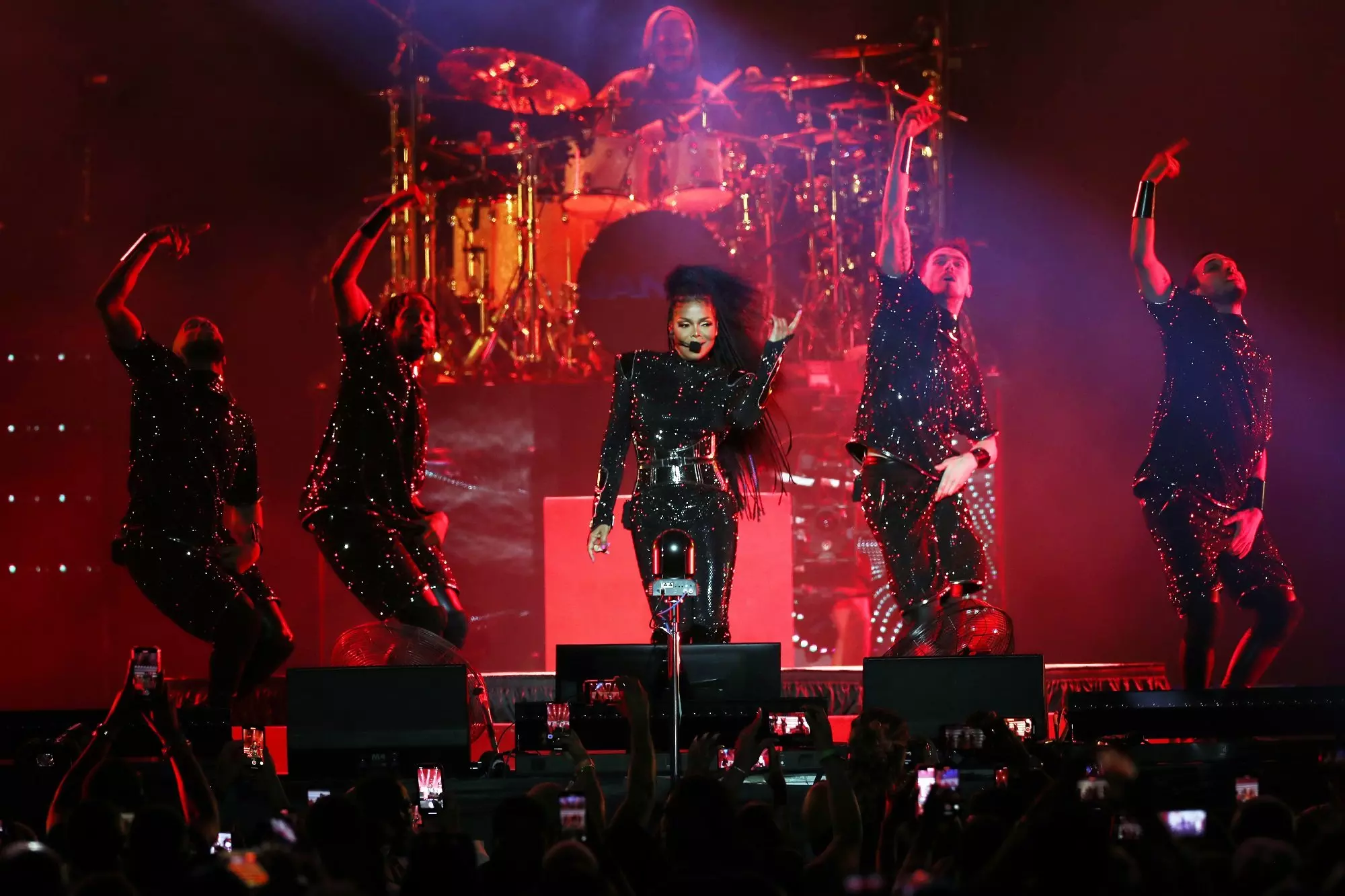
Celebrating 30 Years Of Essence Fest: How New Orleans & Multi-Generational, Diasporic Talent Create The "Super Bowl Of Culture"
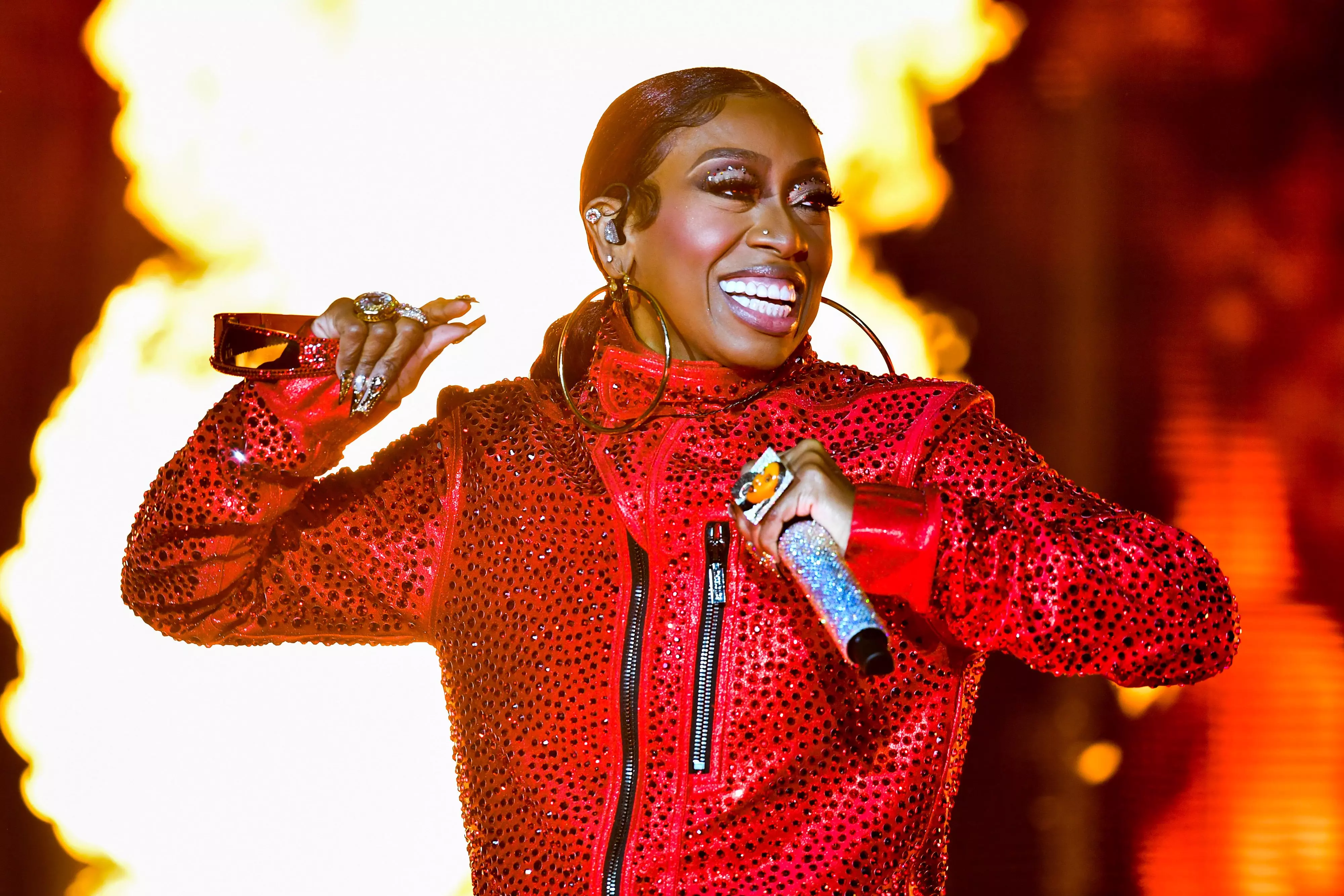
Celebrating Missy Elliott: How The Icon Changed The Sound, Look & Language Of Hip-Hop

Tekno Talks New Music, Touring America & His "Elden Ring" Obsession
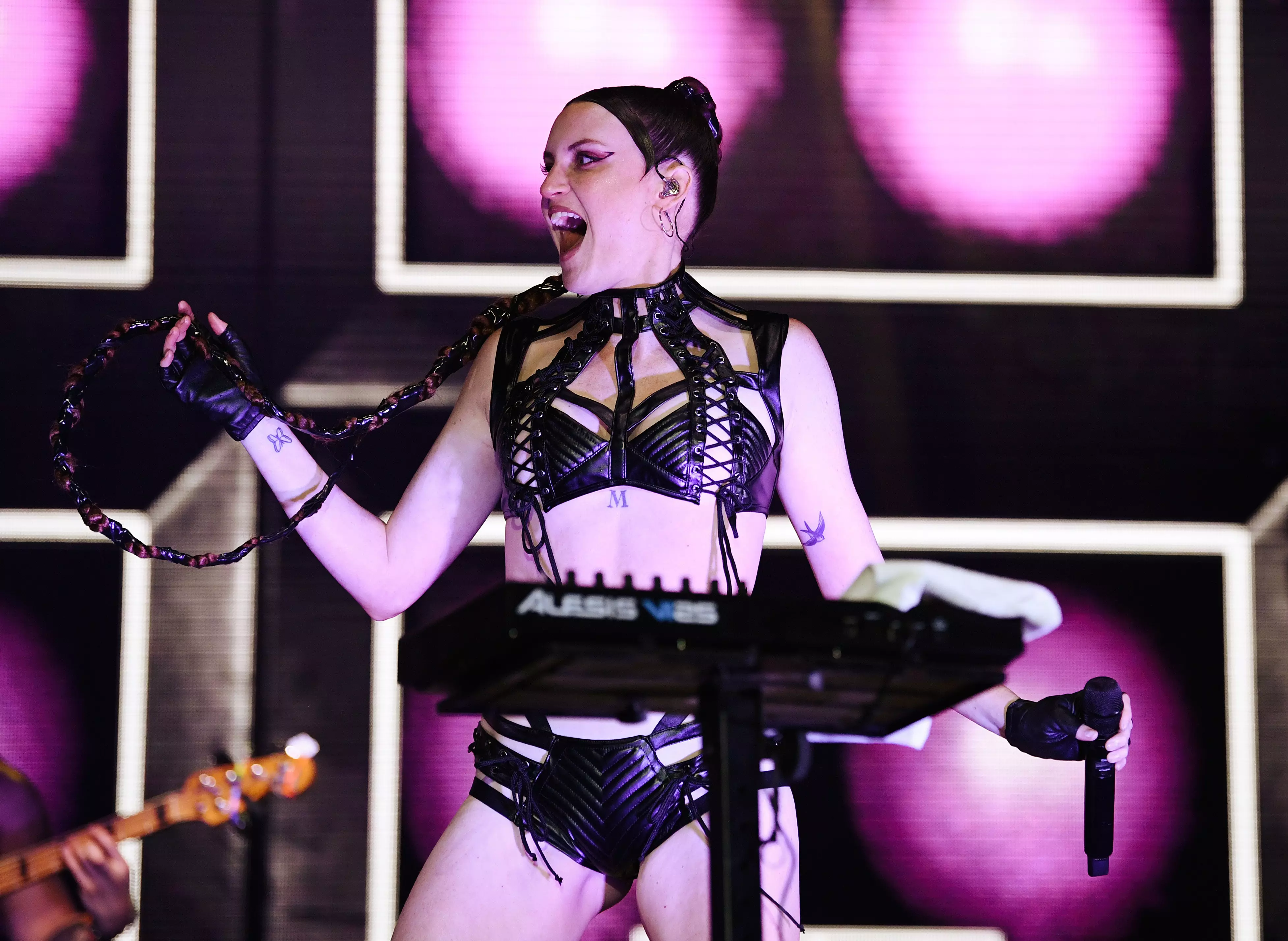
5 LGBTQIA+ Record Labels To Check Out: Get Better Records, So Fierce! And Others
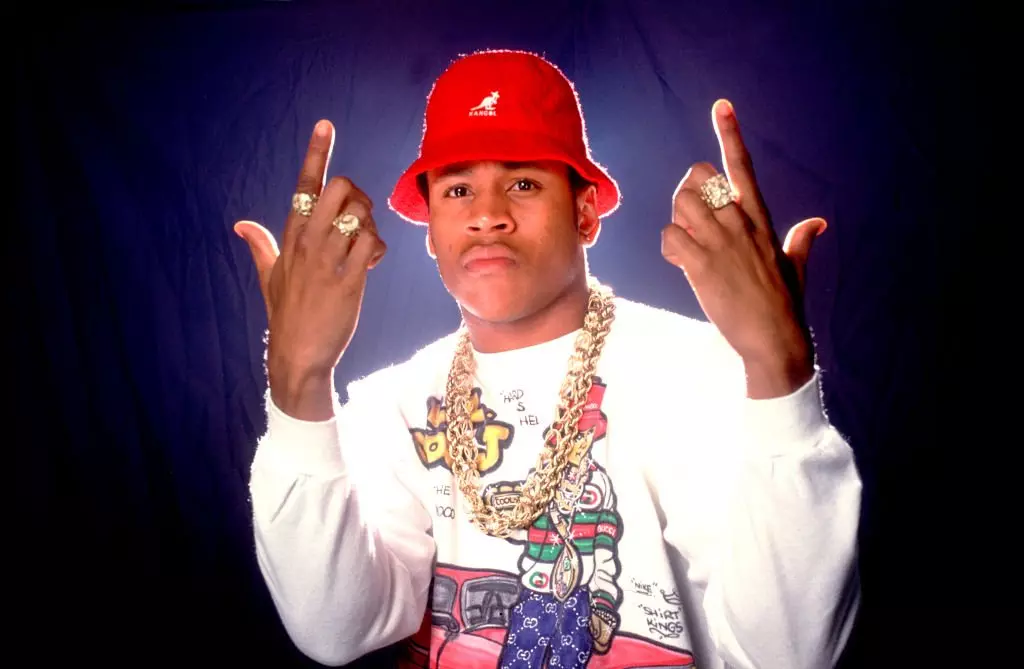
Celebrate 40 Years Of Def Jam With 15 Albums That Show Its Influence & Legacy
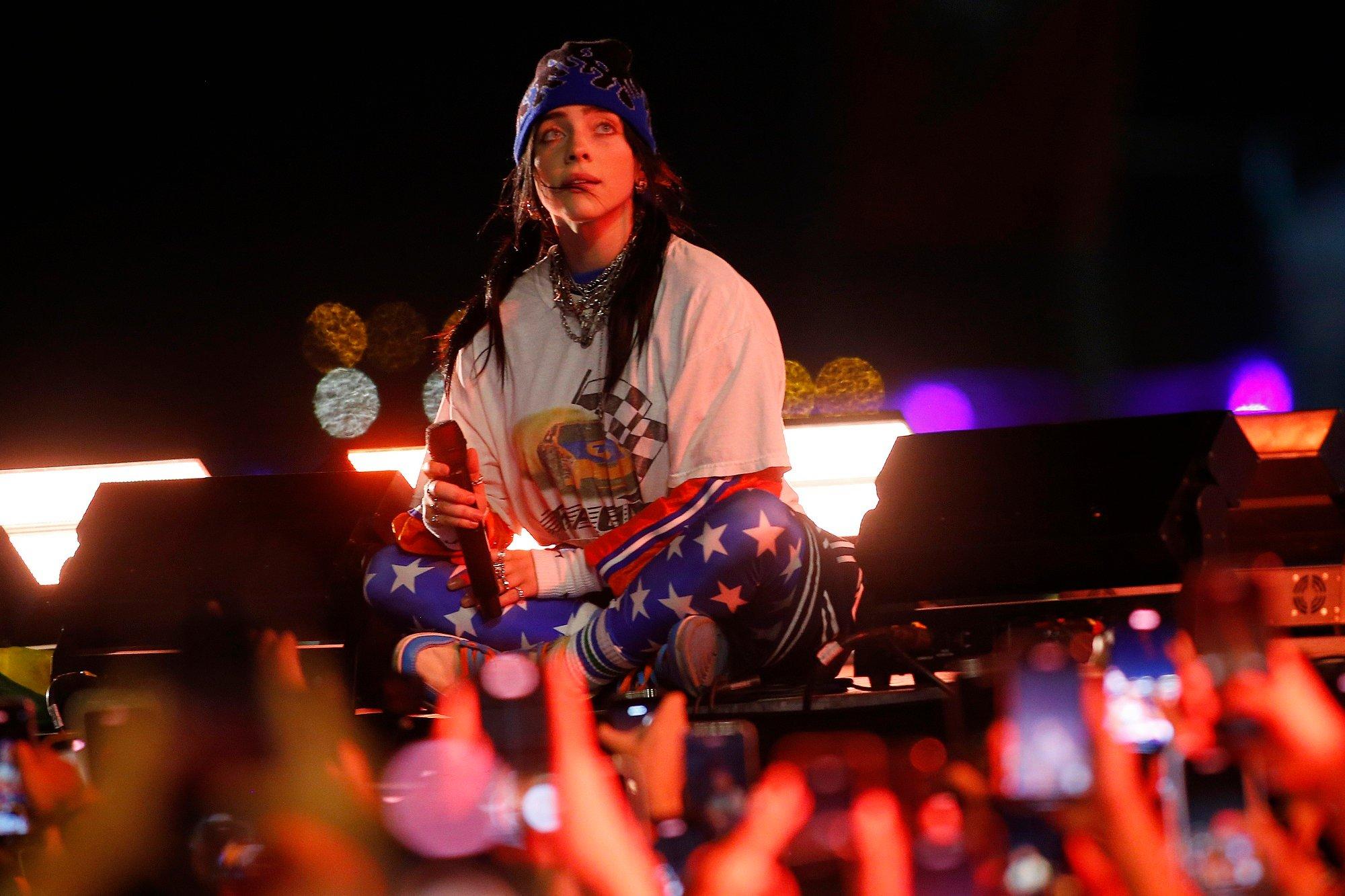
Photo: Marcelo Hernandez/Getty Images
feature
The Environmental Impact Of Touring: How Scientists, Musicians & Nonprofits Are Trying To Shrink Concerts' Carbon Footprint
"It’s not just [about] a single tour, it’s every tour," singer Brittany Howard says of efforts to make concerts more sustainable. From the nonprofit that partnered with Billie Eilish, to an MIT initiative, the music industry aims to curb climate change.
Beloved by fans around the globe, yet increasingly unaffordable for many artists, concert tours are central to the world of entertainment and local economies. After the pandemic-era global shuttering of concert venues large and small, tours are back, and bigger than ever.
Taylor Swift’s Eras Tour is smashing records, selling more than four million tickets and earning more than $1 billion. But that tour made headlines for another reason: as reported in Business Insider and other outlets, for a six-month period in 2023, Swift’s two jets spent a combined 166 hours in the air between concerts, shuttling at most a total of 28 passengers.
Against that backdrop, heightened concerns about the global environmental cost of concert touring have led a number of prominent artists to launch initiatives. Those efforts seek both to mitigate the negative effects of touring and communicate messages about sustainability to concertgoers.
A 2023 study sponsored by Texas-based electricity provider Payless Power found that the carbon footprint of many touring bands was massive. In 2022, concert tours in five genres — country, classic rock, hip-hop/rap, metal and pop — were responsible for CO2 emissions totaling nearly 45,000 metric tons. A so-called greenhouse gas, carbon dioxide contributes to climate change by radiative forcing; increased levels of CO2 also contribute to health problems.
No serious discussion of climate issues suggests a worldwide halt to live music touring, but there exists much room for improvement. Both on their own and with the help of dedicated nonprofit organizations, many artists are taking positive steps toward mitigating the deleterious effects that touring exerts upon the environment.
Smart tour planning is one way to lessen an artist’s carbon footprint. Ed Sheeran’s 2022 European run minimized flights between concert venues, making that leg of his tour the year's most environmentally efficient. Total carbon dioxide emissions (from flights and driving) on Sheeran’s tour came to less than 150 metric tons. In contrast, Dua Lipa’s tour during the same period generated 12 times as much — more than 1800 metric tons — of CO2.
In July, singer/songwriter and four-time GRAMMY nominee Jewel will embark on her first major tour in several years, alongside GRAMMY winner Melissa Etheridge. During the planning stage for the 28-city tour, Jewel suggested an idea that could reduce the tour’s carbon footprint.
"I always thought it was so silly and so wasteful — and so carbon footprint-negative — to have separate trucks, separate lighting, separate crews, separate hotel rooms, separate costs," Jewel says. She pitched the idea of sharing a backing band with Etheridge. "I’ve been trying to do this for 25 years," Jewel says with a laugh. "Melissa is the first person who took me up on it!"
The changes will not only reduce the tour’s carbon footprint, but they’ll also lessen the cost of taking the shows on the road. Acknowledging that there are many opportunities to meet the challenges of touring’s negative impact upon the environment, Jewel emphasizes that “you have to find [solutions] that work for you.”
Sheeran and Jewel aren’t the only popular artists trying to make a difference. A number of high profile artists have become actively involved in creating the momentum for positive change. Those artists believe that their work on sustainability issues goes hand in hand with their role as public figures. Their efforts take two primary forms: making changes themselves, andadvocating for action among their fans.
The Climate Machine
Norhan Bayomi is an Egypt-born environmental scientist at Massachusetts Institute of Technology and a key member of the Environmental Solutions Initiative, a program launched to address sustainable climate action. She’s also a recording artist in the trance genre, working under the name Nourey.
The ESI collaborates with industry heavyweights Live Nation, Warner Music Group and others as well with touring/recording acts like Coldplay to examine the carbon footprint of the music industry. A key component of the ESI is the Climate Machine, a collaborative research group that seeks to help the live music industry reduce carbon emissions. "As a research institution, we bring technologies and analytics to understand, in the best way possible, the actual impact of the music industry upon climate change," says John Fernández, Director of the ESI.
"I’m very interested in exploring ways that we can bridge between environmental science, climate change and music fans," Bayomi says. She explains that the tools at the ESI’s disposal include "virtual reality, augmented reality and generative AI," media forms that can communicate messages to music fans and concertgoers. Fernández says that those endeavors are aimed at "enlisting, enabling and inspiring people to get engaged in climate change."
The Environmental Solutions Initiative cites Coldplay as a high-profile success. The band and its management issued an "Emissions Update" document in June 2024, outlining its success at achieving their goal of reducing direct carbon emissions from show production, freight, band and crew travel. The established target was a 50 percent cut in emissions compared to Coldplay’s previous tour; the final result was a 59 percent reduction between their 2022-23 tour and 2016-17 tour.
A significant part of that reduction came as a result of a renewable-energy based battery system that powers audio and lights. The emissions data in the update was reviewed and independently validated by MIT’s Fernández.
Change Is Reverberating
Guitarist Adam Gardner is a founding member of Massachusetts-based indie rockers Guster, but he's more than just a singer in a rock band. Gardner is also the co-founder of REVERB, one of the organizations at the forefront of developing and implementing climate-focused sustainability initiatives.
Founded in 2004 by Gardner and his wife, environmental activist Lauren Sullivan, REVERB began with a goal of making touring more sustainable; over the years its focus has expanded to promote industry-wide changes. Today, the organization promotes sustainability throughout the industry in partnership with music artists, concert venues and festivals.
REVERB initiatives have included efforts to eliminate single-use plastics at the California Roots Music & Arts Festival, clean energy projects in cooperation with Willie Nelson and Billie Eilish, and efforts with other major artists. Gardner has seen sustainability efforts grow over two decades
"It’s really amazing to see the [change] with artists, with venues, with fans," Gardner says. "Today, people are not just giving lip service to sustainable efforts; they really want to do things that are real and measurable."
The Music Decarbonization Project is one tangible example of REVERB’s successes. "Diesel power is one of the dirtiest sources of power," Gardner explains. "And it’s an industry standard to power festival stages with diesel generators." Working with Willie Nelson, the organization helped switch the power sources at his annual Luck Reunion to clean energy. At last year’s festival, Nelson’s headlining stage drew 100 percent of its power from solar-powered batteries. "We set up a temporary solar farm," Gardner says, "and the main stage didn’t have to use any diesel power."
Billie Eilish was another early supporter of the initiative. "She helped us launch the program," Gardner says. Eilish’s set at Lollapallooza 2023 drew power from solar batteries, too.
With such high-profile successes as a backdrop, Gardner believes that REVERB is poised to do even more to foster sustainable concerts and touring. "Our role now," he says, "isn’t just, ‘Hey, think about this stuff.’ It’s more how do we push farther, faster?"
Adam Gardner believes that musicians are uniquely positioned to help make a difference where issues of sustainability are concerned. "When you’re a musician, you’re connecting with fans heart-to-heart. That’s what moves people. And that’s where the good stuff happens."
Small-scale, individual changes can make a difference — especially when they’re coordinated and amplified among other concertgoers. Gardner provides real-world examples. "Instead of buying a plastic bottle, I brought my reusable and filled it up. Maybe I carpooled to the show." Conceding that such steps might seem like drops of water in a giant pool, he emphasizes the power of scale. "When you actually multiply [those things for] just one summer tour, it adds up," he says. "And it reminds people, ‘You’re not alone in this; you’re part of a community that’s taking action."
Gardner understands that REVERB’s arguments have to be framed the right way to reach concertgoers. "Look," he admits, "It’s a concert. We’re not here to be a buzzkill. Our [aim] now is making sure people don’t lose hope." He says that REVERB and its partners seek to demonstrate that, with collective action and cultural change, there is reason for optimism.
"There’s a wonderful feedback loop between hope and action," Gardner says with a smile. "You can’t really have one without the other."
Sustainable Partnerships
Tanner Watt is Director of Partnerships at REVERB; he works directly with touring artists to develop, coordinate and implement initiatives that bring together his organization’s objectives and the specific personal concerns of the artists. "I get to come up with all the fun, big ideas," he says with a wide smile.
Watt acknowledges that like every concertgoer, each touring artist has a certain level of responsibility where sustainability is concerned. "And everyone can be doing something," he says, noting a number of straightforward actions that artists can put in place while on tour. "They can eliminate single-use waste. They can donate hotel toiletries that [would otherwise] hit the landfill."
Watt stresses that artists can lead by example. "Nobody wants to listen to an artist telling them what to do if they’re not doing it themselves," he says. "But we believe that everybody cares about something." He suggests that if an artist has cultivated a following, "Why not use [that platform] to be that change you want to see in the world?"
Each artist has his or her own specific areas of concern, but Watt says that there’s a base level of "greening" that takes place on every REVERB-affiliated tour. Where things go from there is up to the artist, in coordination with REVERB. Watt mentions Billie Eilish and her tour’s sustainability commitment. "The Venn diagram of food security, community health, access to healthy food, and the impact on the planet is a big cause for her," he says. "So there’s plant-based catering for her entire crew, across the entire tour."
Speaking to Billboard, Eilish's mother Maggie Baird said championing sustainability starts with artists. "If artists are interested, it does really start with them telling their teams that they care and that it’s foremost in their thoughts." In the same conversation, Eilish called the battle for sustainability "a never-ending f–king fight."
Watt acknowledges that with so many challenges, it’s important for a concerned artist to focus on the issues that move them the most, and where they can make the biggest difference. "Jack Johnson is a great example," he says. While Johnson is a vocal advocate for many environmental issues, on tour he focuses on two (in Watt’s words) "cause umbrellas": single-use plastics solutions and sustainable community food systems. Each show on the tour hosts tables representing local nonprofit organizations, presenting concertgoers with real-world, human-scale solutions to those specific challenges.
Four-time GRAMMY winner Brittany Howard is another passionate REVERB partner. "Knowing that I wanted to make my tours more sustainable was a start," she tells GRAMMY.com, "but working with REVERB really helped me bring it to life on the road. REVERB has helped us with guidelines and a green rider to keep our stage, greenrooms and buses more sustainable."
After listing several other specific ways that her tour supports sustainability, Howard notes, "By supporting these efforts, I am helping ensure future generations have access to clean water, fish, and all that I love about the outdoors." A dollar from every ticket sold to a Brittany Howard concert goes toward support of REVERB’s Music Decarbonization project. "I’m also excited to see industry-wide efforts that are reducing the carbon pollution of live music," Howard continues. "Because it’s not just [about] a single tour, it’s every tour."
There’s a popular aphorism: "You can’t manage what you can’t measure." From its start, REVERB has sought not only to promote change, but to measure its success. "As long as I’ve been at REVERB, we’ve issued impact reports," says Tanner Watt. "We include data points, and give the report to the artists so they understand what we’ve done together." He admits that some successes are more tangible than others, but that it’s helpful to focus on the ones that can be quantified. "We’re very excited that our artists share those with their fans."
Watt is clear-eyed at the challenges that remain. "Even the word ‘sustainable’ can be misleading," he concedes, suggesting that the only truly sustainable tour is the one that doesn’t happen. "But if folks don’t step it up and change the way we do business in every industry — not just ours — we’re going to get to a place where we’re forced to make sacrifices that aren’t painless." Getting that message across is REVERB’s aim. "We can’t stop the world," Watt says. "So we find ways to approach these things positively."
Watt says that the fans at concerts featuring Jack Johnson and the Dave Matthews Band — both longtime REVERB partners — are already on board with many of the sustainability-focused initiatives which those artists promote. "But there are lots of artists — and lots of fan bases — out there that aren’t messaged to, or have been mis-messaged to," he says. "I’m really excited to find more ways to expand our reach to them, beyond mainstream pop music. Because these are conversations that are meaningful for everyone, regardless of political affiliation or other beliefs."
Reimagining The Planet’s Future
Singer, songwriter and multi-instrumentalist Adam Met does more than front AJR, the indie pop trio he founded in 2005 with brothers Jack and Ryan. Met has a PhD in sustainable development and is a climate activist; he's also the founder/Executive Director of Planet Reimagined, a nonprofit that promotes sustainability and activism through its work with businesses, other organizations and musicians.
"I’ve spent years traveling around the world, seeing the direct impact of climate change," Met says. He cites two recent and stark examples. "When we pulled up to a venue in San Francisco, the band had to wear gas masks going from the bus into the venue, because of forest fires," he says. AJR’s road crew had to contend with a flash flood in Athens, Greece that washed out their hotel. "And in Rome, some of our crew members fainted because of the heat."
Encouraged by representatives from the United Nations, Met launched Planet Reimagined. Met’s approach focuses on tailored, city-specific actions to empower fans and amplify diverse voices in the climate movement. Through social media and live shows, Met strives to galvanize climate activism among AJR fans. And the methods he has developed can be implemented by other touring artists.
Met points out that one of the most climate-unfriendly parts of the entire concert tour enterprise is fans traveling to and from the concerts. And that’s something over which the artist has little or no control. What they can do, he says, is try to educate and influence. Working closely with Ticketmaster and other stakeholders, Met’s nonprofit initiated a study — conducted from July to December 2023, with results published in April 2024 — to explore the energy that happens at concerts. "In sociology," he explains, "that energy is called collective effervescence." The study’s goal is to find ways to channel that energy toward advocacy and action.
Polling a quarter million concertgoers across musical genres, the study collected data on attitudes about climate change. "Seventy-three percent of fans who attend concerts believe that climate change is real, and that we need to be doing more about it," Met says. "Seventy-eight percent have already taken some sort of action in their lives." He believes that if his organization can activate even a fraction of the estimated 250 million people annually who attend concerts around the globe, "that’s the ballgame."
Met’s goal is to do more than, say, get concertgoers to switch from plastic to paper drinking straws. "At scale those things make a difference. But people want to see actions where there’s a track record," he says; a return on investment.
AJR will be putting a plan into action on the second half of their upcoming arena tour. Part of the initiative is encouraging concertgoers to register to vote, and then actually vote. Beyond that, Met has specific actions in mind. "At every single stop, we’re putting together materials around specific policies that are being debated at the local level," he explains. "We give people a script right there, so they can call their elected representative and say, ‘I want you to vote [a certain way on this issue].’"
He believes the initiative will lead to thousands of people contacting – and hopefully influencing – their representatives. With regard to sustainability issues, Met is convinced that "the most impact that you can have as an artist is when you give fans ways to pick up the mantle themselves."
Artists Who Are Going On Tour In 2024: The Rolling Stones, Drake, Olivia Rodrigo & More
